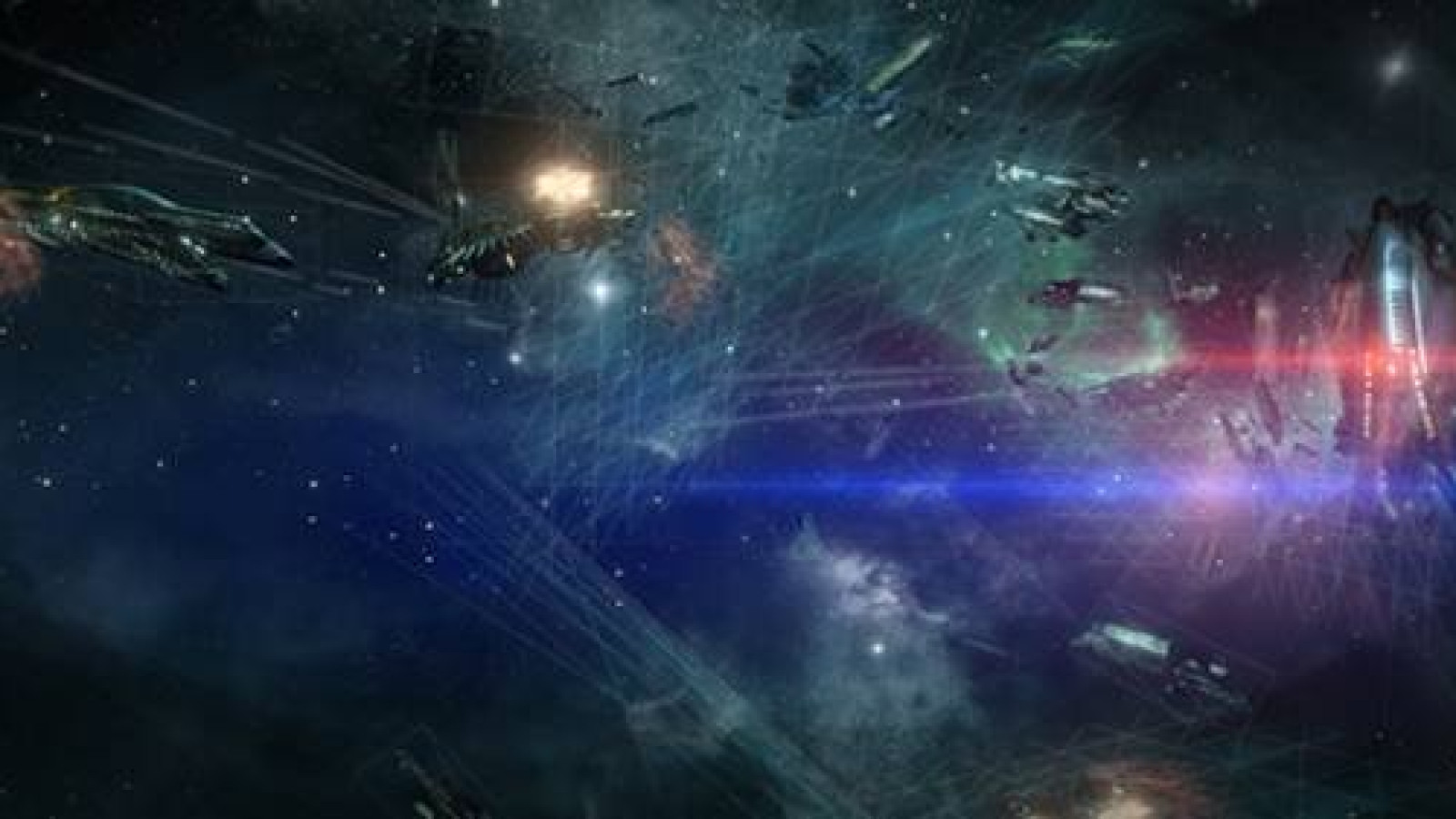
Nothing more firmly grounds the player into the immersion of Warframe as the fine details of the horizon. A good skybox cements the player’s location. It can make us feel as though we’re isolated in a vast and empty tundra, or operating on a planet choked by the fog of reckless industry. In the void of space it represents a fraction of eternity. A horizon that surrounds players from every angle.
The skybox is an essential part to any level we create and with Update 15’s introduction of Archwing we finally put the Space in Space Ninja. There’s quite a bit that goes into giving Tenno the sensation of flying in space, but when it comes to making that space look interesting we need look no further than 3D Environment Artist Ryan Andrews. He is, after all, the one who will be bringing Archwing’s epic skybox to life.
Like most great things, it all starts with a general idea...

Alright, so it’s not that fancy. The point is, for Ryan, it gets the job done. General placement of the tileset (in this case a ship) and the activity around it will help him plan out what needs to be placed in the background. It also gives a rough idea of how much work will be involved to help better manage his time.
The other purpose of this incredibly rough sketch is to help him visualize exactly what kind of story he wants to tell. The skybox is a very important part of Warframe’s developing narrative, often times giving subtle hints to the greater role locations play within the lore. If you need a current in-game example we need look no further than the Grineer Shipyard tileset. A careful eye will spot Fomorian ships being constructed in distance.

Once the rough concept has been approved by the Art Director development on the skybox can begin. Larger levels will often times be broken into tasks between Ryan and our other Environment Artists, but in the case of the this particular project the majority of the work was handled solely by Ryan.
By separating the rough sketch from earlier into general layers Ryan is able to create miniature set pieces for the skybox that can be used in a wide variety of ways. For example, once he’s created a general portrait of an exploded ship he can then section off each portion of the ship’s debris into cards. Rotating individual pieces of the ship, resizing parts to appear further (or closer) all are done using these smaller cards.
Another reason for the cards is because skybox design is because development on the skybox begins even before level design has begun. As progress continues on the level Ryan will need to make changes to the placement of elements within the background. There’s no sense in creating an epic space battle in the distance if no one can see it!

A skybox consists of multiple cards all arranged in various layers. Each card must be arranged at a specific distance to create a sense of depth, but there are lots of other tools that can be used to give the feeling of being in deep space.
Lighting may seem like the most obvious but playing with lights in a void is actually pretty tough. Gaseous effects are added to the level made courtesy of fellow Environment Artist Adrian Migliazza, and by manipulating their color and the light intensity on each gas cloud we can better create a sense of scale on the Balor Fomorian.
Adrian also created the space backdrop that comes up quite often in Warframe. You may recognize its star speckled horizon from other classic moments Warframe; including that time you looked outside of the Liset, and most backdrops with a planet!

The gas clouds take up their own layer just like any ship or piece of debris, and the ultimate goal is to bring the skybox to a minimum of 8 to 10 layers.
Every item within the skybox is created in conjunction with the production team to ensure that every portion of the level has the same look and feel. Sometimes it means creating a series of sample images to see what works, but either way it boils down to communication. To ensure he’s always on point Ryan shares work with the rest of the level designers and the Art Director at various milestones, making changes when needed.

The entire process can take anywhere between 3-6 weeks, depending on what’s required. A skybox that doesn’t use elements already created in Warframe naturally takes longer as new assets would have to be created.
When all’s said and done we have ourselves a skybox appropriate for an epic space battle. I’m sure you’ll all have your eyes on the horizon once Update 15 is launched. Here’s something to tide you over until then.


